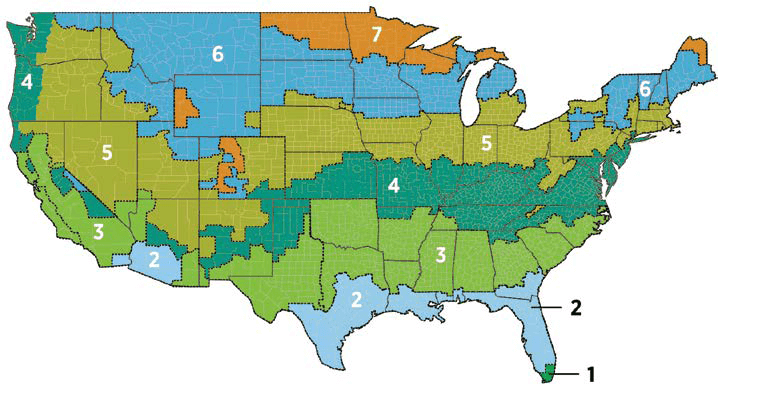An insulating material’s resistance to conductive heat flow is measured or rated in terms of its thermal resistance or R-value — the higher the R-value, the greater the insulating effectiveness. The R-value depends on the type of insulation, its thickness, and its density. The R-value of some insulations also depends on temperature, aging, and moisture accumulation. When calculating the R-value of a multilayered installation, add the R-values of the individual layers.
Installing more insulation in your home increases the R-value and the resistance to heat flow. In general, increased insulation thickness will proportionally increase the R-value. However, as the installed thickness increases for loose-fill insulation, the settled density of the product increases due to compression of the insulation under its own weight. Because of this compression, loose-fill insulation R-value does not change proportionately with thickness. To determine how much insulation you need for your climate, consult a local insulation contractor.
The effectiveness of an insulation material’s resistance to heat flow also depends on how and where the insulation is installed. For example, insulation that is compressed will not provide its full rated R-value. The overall R-value of a wall or ceiling will be somewhat different from the R-value of the insulation itself because heat flows more readily through studs, joists, and other building materials, in a phenomenon known as thermal bridging. In addition, insulation that fills building cavities densely enough to reduce airflow can also reduce convective heat loss.
Unlike traditional insulation materials, radiant barriers are highly reflective materials that re-emit radiant heat rather than absorbing it, reducing cooling loads. As such, a radiant barrier has no inherent R-value.
Although it is possible to calculate an R-value for a specific radiant barrier or reflective insulation installation, the effectiveness of these systems lies in their ability to reduce heat gain by reflecting heat away from the living space.
The amount of insulation or R-value you’ll need depends on your climate, type of heating and cooling system, and the part of the house you plan to insulate. To learn more, see our information on adding insulation to an existing house or insulating a new house. Also, remember that air sealing and moisture control are important to home energy efficiency, health, and comfort.

All of Alaska in Zone 7 except for the following Boroughs in Zone 8:
- Bethel
- Dellingham
- Fairbanks N. Star
- Nome
- North Slope
- Northwest Arctic
- Southeast Fairbanks
- Wade Hampton
- Yukon-Koyukuk
Zone 1 includes Hawaii, Guam, Puerto Rico, and the Virgin Islands.
| ADD INSULATION TO ATTIC | |||
|---|---|---|---|
| Zone | Uninsulated Attic | Existing 3-4 Inches of Insulation | Floor |
| 1 | R30 to R49 | R25 to R30 | R13 |
| 2 | R30 to R60 | R25 to R38 | R13 to R19 |
| 3 | R30 to R60 | R25 to R38 | R19 to R25 |
| 4 | R38 to R60 | R38 | R25 to R30 |
| 5 | R49 to R60 | R38 to R49 | R25 to R30 |
Wall Insulation:
Whenever exterior siding is removed on an uninsulated wood-frame wall:
- Drill holes in the sheathing and blow insulation into the empty wall cavity before installing the new siding, and
- Zones 3-4: Add R5 insulative wall sheathing beneath the new siding
- Zones 5-8: Add R5 to R6 insulative wall sheathing beneath the new siding.
Whenever exterior siding is removed on an insulated wood-frame wall:
- For Zones 4 to 8: Add R5 insulative sheathing before installing the new siding.
* These recommendations are cost-effective levels of insulation based on the best available information on local fuel and materials costs and weather conditions. Consequently, the levels may differ from current local
building codes.
Source: ENERGY STAR

